#Urban Nation Museum
Explore tagged Tumblr posts
Text
„FUTURE VISIONS: Artistic Approaches to Peace“ Ausschreibung
Die Gewobag-Stiftung Berliner Leben schreibt für die 11. Ausgabe des Fresh A.I.R. Programms aktuell wieder Stipendien aus. Wie du mitmachen kannst erfährst du auf bspoque.com #linkinbio
Die Fresh A.I.R. Stipendien 2026 Unter dem Titel „FUTURE VISIONS: Artistic Approaches to Peace “werden bis zu 13 europäische Kunst- und Kulturschaffende ausgewählt, die im Jahr 2026 ein 10-monatiges Residenzstipendium in Berlin erhalten. Bewerbungen sind ab sofort bis zum 23. Februar 2025 möglich. Kunst als Antwort auf globale Herausforderungen Angesichts der komplexen globalen…

View On WordPress
#Aktivismus#Atelierwohnung#Ausschreibung#Austausch#berlin#Dialog#Fresh A.I.R.#Frieden#Gesellschaft#Kulturschaffende#Kunst#Künstler*innen#Kunstszene#Projekte#Schöneberg#Sicherheit#Stiftung Berliner Leben#Stipendien#Technologie#Urban Nation Museum#Wissenschaft
0 notes
Text
For #NationalPigeonDay :

Anton Romako (Austrian, 1832–1889) Girl at a window to St. Mark's Square, feeding #pigeons, c.1875 oil on panel, H28 cm (11 in) x W 22 cm (8.6 in) Belvedere Museum
#animals in art#animal holiday#european art#birds in art#19th century art#bird#birds#painting#pigeon#pigeons#flock#oil painting#Anton Romako#Austrian painting#Realism#Belvedere Museum#National Pigeon Day#urban wildlife
129 notes
·
View notes
Text

Entrance Court fountain, National Gallery of Art, East Building behind, Washington, DC, 2002.
#urban landscape#fountain#museum#architecture#abysmal#national gallery of art#washington dc#2002#photographers on tumblr
16 notes
·
View notes
Text






























Kodak Ultramax 400
#35mm#contemporary art museum#conteporary art#mnac#muzeul national de arta contemporana#slim cat#fat cat#sunset#tramway#golden hour#passage#pasajul basarab#pod basarab#trains#train station#gara de nord#art museum#textiles#textile installation#nicolae comanescu#classical art#interior design#rooftop#urbex#urban exploration#architecture#dog#doggo#white dog#cat
2 notes
·
View notes
Photo
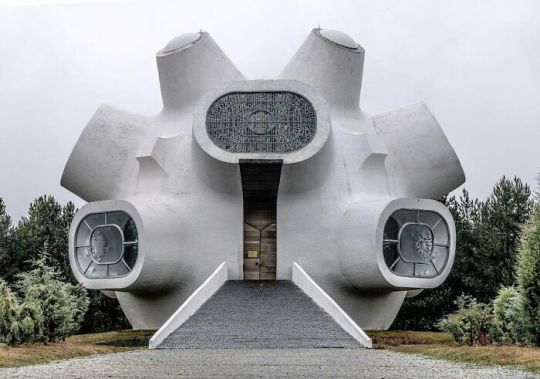
Ilinden / Makedonium – A Monument Dedicated To The Fighters And Revolutionaries Who Participated In The Ilinden Uprising Of 1903
Revitalizing The Heritage Of Socialist Modernism: BACU’s Online Initiative To Protect Central And Eastern European Architecture
Preserving the monumental yet decaying structures of central and eastern Europe erected between 1955-91 is the mission of the online initiative, Socialist Modernism, created by the Bureau for Art and Urban Research (BACU). With an aim to revitalize this heritage, BACU believes in the significance of these elements which managed to defy some of the ideological requirements of their time, giving the urban space a distinct flavor characteristic of the socialist period.

Palace Of Weddings, Bishkek, Kyrgyzstan, Built In 1987
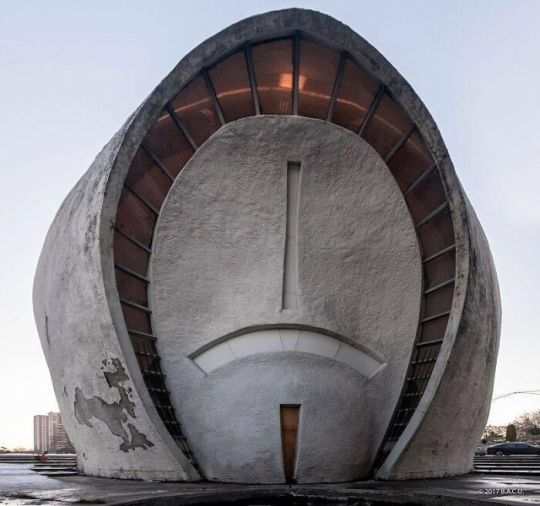
One Of The Two Halls Of Parting, Memory Park (Kyiv/Kiev) Ukraine. Built 1968–1981

Eastern Gate Of Belgrade, Rudo Buildings, (Istočne Kapije) Belgrade, Serbia, Built In 1976, Architect: Vera Ćirković Engineer: Milutin Jerotijević
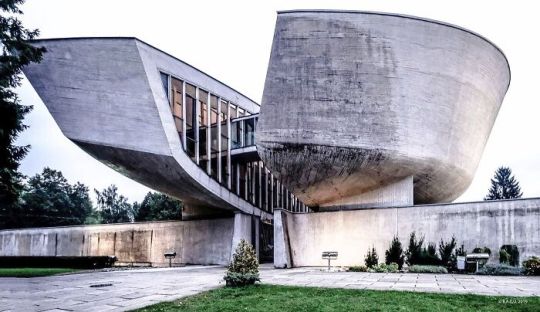
Museum Of The Slovak National Uprising, Banska Bystrica, Slovakia, Built In 1969
#socialist modernism#bureau for art and urban research (bacu)#central and eastern european architecture#architecture#history#socialism#heritage#ilinden uprising#palace of weddings#bishket#kyrgyzstan#halls of parting#memory park#kyiv#kiev#ukraine#belgrade#servia#museum of the slovak national uprising#banska bystrica#slovakia
6 notes
·
View notes
Text

#phoneography#mobiele telefoon fotografie#mobile phone photography#smartphoneography#smartphone fotografie#smartphone photography#Taiwan#Taipei#New Taipei city#New Taipei#national palace museum#skyline#city#stad#urban#subtropics#tropics#travel photography#reisfotografie#travel#reizen#reisen#voyage#viajar#Azië#Asia#vscocam#vsco#colour#color
1 note
·
View note
Note
Is there an archaeology thing you wish someone would ask you about because you wanna talk about it and if so would you be willing to talk about it? Here is a picture of my cat in trade but you can look at the picture even if you don’t talk about something

You know what, there IS, and it's all courtesy of @micewithknives!
I'm in charge of teaching my very own class this semester, which means I have full control over the course and I can do pretty much whatever I want. I was given a hand-me-down syllabus and overall I'm not changing much because this is my first time doing something like this and I don't want to get too into the weeds.
But the course is Ancient Civilizations, and we're getting at AUSTRALIA WEEK, babeyyy!!!
I've taken a version of this class and seen examples for a couple more, and I don't think I've ever encountered Australia in a context like this. Ancient Civ classes tend to focus on urban centers and monumental architecture, which is (partially) the result of Western bias for what counts as a "civilization" and means that a lot of cultures get left out.
With Mice's help, I've been learning about early Australian archaeology, and there is SO MUCH TO LEARN! Way too much to fit into a single week, but classes like this are really only capable of giving a very general overview. Anyway, here are some of the readings I'm having my students do:
Mice, I'll turn the stage over to you if you have anything you want to add.
-Reid
252 notes
·
View notes
Text
Sculpture of a Woman with Four Children, from Mali, c.1100-1450 CE: this sculpture was created in the ancient city of Djenné-Djenno

Created during the 12th-15th centuries CE, this sculpture depicts a woman sitting cross-legged on the ground, with two children on her lap and two more clinging to her back. Scarification patterns are visible on the woman's temples, and there is a thick, undulating line running from her forehead to the nape of her neck, likely representing a serpent.

As this article explains:
Snakes on Inner Niger Delta sculptures are a common element and should be seen as a positive iconographic component. They represent control of a potentially dangerous benevolent power that must be tamed, domesticated, nourished, and satisfied so it will continue to provide protection.
This is one of the many terracotta sculptures that were produced in Djenné-Djenno, located in the Niger River Valley of Mali, in West Africa; Djenné-Djenno sits just to the south of the Medieval city of Djenné, which is still a major center of Islamic scholarship.

The ancient city of Djenné-Djenno dates back to at least 250 BCE, making it one of the oldest cities in West Africa. For centuries, it also served as one of the largest urban centers/trading hubs in the region, with a peak population of about 20,000 people. The city began to decline in the 9th century CE, when residents (and trade) began moving northward to the nearby city of Djenné, which had just recently been founded by Muslim traders. Djenné-Djenno was ultimately abandoned by the end of the 15th century.
Unfortunately (and unsurprisingly), most of the artifacts from Djenné-Djenno were looted or destroyed by colonizing forces during the 19th-20th centuries. Some of those artifacts have been repatriated in recent years, and there are ongoing efforts to return more of them.
Why Western museums should return African artifacts.
Sources & More Info:
Yale University Art Gallery: Female Figure with Four Children
World History Encyclopedia: Djenné-Djenno
Tribal Art: Scrofulous Sogolon (PDF)
ArtNews: Museum of Fine Arts Boston to Return Terra-Cotta Figures from Mali in Latest Restitution Efforts
CBS: African Nations Want their Stolen History Back, and Experts Say it's Time to Speed up the Process
Fair Observer: It is Now Time for the West to Return African Art
#archaeology#artifact#history#anthropology#dogon#djenne-djenno#mali#west africa#medieval art#sculpture#art#motherhood#children#djenne#african art#african history#repatriation#inner niger valley#terracotta#conservation#timbuktu
42 notes
·
View notes
Text
I Live On Stolen Land
Consider donating to one of these wonderful charities dedicated to preserving the cultures, livelihoods, rights, and dignity of Indigenous peoples.
First Nations Development Institute. Information taken from their 'Our Programs' page: Grantmaker dedicated to addressing financial inequality and its many, many negative impacts. In additional to financial aid, FNDI provides job training and participates in policy-making and advocacy, often focusing on environmental concerns, food insecurity, and tribal sovereignty. Some examples of current projects include "Fortifying Our Forests" AKA restoring and protecting sacred land in partnership with the Forest Service, Native Language Immersion Initiative AKA ensuring the survival of Native languages, and Native Farm To School AKA connecting Native youth with traditional means of growing and harvesting food.
Native American Rights Fund A registered non-profit that provides legal representation in matters of Native interest, be that a single individual or an entire tribe. Since their inception, they have won cases that made critical contributions to the advancement of Native rights in the United States. Their efforts have helped uphold tribal sovereignty, compelled museums, universities, and other institutions to return the remains of Native ancestors, and protected the voting rights of pretty much everyone.
Redhawk Native American Arts Council This organization's primary focus is on the preservation of Native American arts through educational programs. We can also thank them for granting scholarships to Native students seeking higher education, and for running a youth program which aims to help Urban Indigenous youth connect with their heritage through the arts.
Seventh Generation Fund A "fiscal sponsor" for smaller community groups that are run by and for Native tribes/individuals, with the focus of preserving heritage and defending tribal sovereignty, as well as continued survival post-genocide. One example of their work is the Flicker Fund, a disaster fund dedicated to supporting Indigenous communities during times of crisis, be that a pandemic, extreme weather, or a severe drought. Another is the Traditions Bearers Fellowship, which provides financial support to tribal community members who carry on pre-colonization traditions.
Quiluete Move To Higher Ground Stephanie Meyer committed a serious of egregious acts of cultural appropriation and exploitation, and made a very large fortune off a very real tribe. This very real tribe now finds themselves living in a tsunami zone and unable to afford a move to a safer area. As of 2022, the move of the Tribal School, the most important phase, is complete, but there's much more work to be done.
Indigenous Women Rising Abortion Fund A fund to provide Native individuals and family access to abortion care, menstrual hygiene supplies, and midwifery. Here are two separate articles verifying their status as the ONLY indigenous specific (and Indigenous led) abortion fund. For more information on how the destruction of Roe V Wade has negatively impacted Indigenous women, look here and here.
South Dakota Historical Society Foundation So, this isn't a Native led or Native specific organization, but, they work closely with Indigenous communities in South Dakota to preserve their heritage alongside the state's history. I recently had a lovely conversation with one of their representatives about the Ghost Shirt their society is sheltering until such a time as the tribe it rightfully belongs to can house it safely. Article about the shirt's repatriation with some cool info on the shirt's history is here.
167 notes
·
View notes
Text
Great Adult Presents Between Adult Friends
a list inspired by gifts I've given or been asked for or want, but not including crafts and art you make yourself because those are more obviously treasures. this list is for "oh I have no idea what to gift/make someone"
Special Interest Magazines - from Star Trek, Astronomy, to SpecLit, and beyond
Little Trinkets - for their desks at work/elsewhere, things they can look at and think of you. candles in fun shapes! weather crystals! little carved figurines!
Calendars - desk and wall calendars with art on subjects they're interested in, like National Parks or Seasons or Alphonse Mucha or anything
Food Gift Baskets - either fresh season fruit like Harry & David Pears or non perishable things like assorted hot chocolates to try, or hot sauces, or cheeses. I like this strat better than gift carding.
Comfort Items - Blankets for display and for outside and for inside comfort, pillows both decorative and practical, hot water bottles, fluffy robes. How likely is someone gonna buy it for themselves? but they'll appreciate having it!
Museum Memberships. They can always choose not to renew in the coming year, but a museum membership often gives them complimentary / reciprocal free admission to other museums within the same association. It also often lets them take +1's! A single one time gift can turn into a whole year of goodness :) AND this goes for BOTANICAL GARDENS AND AQUARIUMS AND ZOOS TOO.
A Book That Was Important To You Sometime - Even if I don't end up reading it or liking it I am honored and happy to have a book someone cared about in my collection, especially if they tell me why. I will think of them always and it feels like a piece of them!
Special Editions of things they already have - a special edition book or album or game case or anything will be a beautiful addition even if I've already read/consumed that media.
These are great for semi-surprise gifts, where you don't just go and ask "Hey, I'm getting you something, what do you like."
As for other gifts where you aren't so concerned with surprise, since they may require some coordinating:
A Large Version of Their Favorite Scent (perfume, cologne)
An Appointment at a Cat Cafe
Tickets to a Museum/Aquarium "After Dark" Event
Tickets to a Museum/Gallery Special Exhibition
An Intro Class for a Specialty Hobby (like book binding, cooking, ceramics)
A Piece of Art from a Local Artist they would never find elsewhere (photographers, 2d media artists, sculptors, anything) (safe subjects include: birds, fields, beaches, mountains, urban art specific to their home; more adventurous subjects and depictions depending on how well you know their style; safe size is small like a post card or 8x11", but for something you're confident in, bigger is special! aluminum prints are very nice)
COOKBOOKS. Classic cookbooks like Better Homes & Gardens or good French cooking staples, or niche books like for a specific ethnic cuisine, or for a specific type of food like ramen, or cookbooks by their favorite celebrity
Art Book for a Favorite Movie/Series.
Designer Measuring Cups/Bowls. Upgrade them from the plain plastic/glass/metal that they use. There are amazing porcelain/china designs for even things like measuring SPOONS (this was a hit with my sister who bakes - and that set came with a matching apron)
Resin Lamps. From humpback whales, cloud scapes, to Pokemon, there are beautiful resin displays that light up and are more unique than just a figurine.
287 notes
·
View notes
Note
can you tell me more about greeks from eastern europe and MeNa ? I cant find anything on them
Anon, when you were asking this, I assume you did not expect it would start an Odyssey for me. The ask was literally a "tell me more about the Greeks of three continents" and I... complied. It took me 20 days but I kinda wrote a book here. It was not easy. I used the English Wikipedia for sources. You can look there for more information.
I should note I did not include the Cypriot Greeks in this because I assumed you did not mean Greeks who have their own sovereign state. So, ultimately this is about Greek minorities. The topic of a minority - any minority - is always sensitive. As a result, some information here might be unpleasant. The purpose of the post is not to provoke or cause any controversy. It is only the truth of Greek people living outside Greece and Cyprus.
This post is only about the Greeks specifically from the areas Anon asked about.
Chapters:
Egyptian Greeks
Sudanese, Tunisian and Libyan Greeks
Greeks of Albania
Ukrainian Greeks
Greeks of Russia and other Caucasus Greeks (including those of Georgia and Armenia)
Greeks of Romania and Moldova
Greeks of Bulgaria
Greeks in the Republic of North Macedonia
Greek presence in Hungary, Czechia, Poland and Serbia
Greeks of Syria and Lebanon
Greeks of Israel and Palestine
Greeks of Turkey
North Africa
Egyptian Greeks (Egyptiótes / Alexandriní)
One of the historically most prolific Greek minorities. While mercenaries and other small groups of Greeks had settled in Egypt centuries earlier, they really established themselves there during Alexander's conquests in the Hellenistic period. Ever since, they have been mostly concentrated around Alexandria, the city Alexander had built and named after himself, and later also Cairo, so they always formed an urban social class. Alexandria was a Greek hub for the longest time, throughout the Ptolemaic Kingdom, the Byzantine Empire and even the Ottoman times. Their numbers however had reached their lowest in the 18th century but a new surge of Greeks migrated to Egypt in the meantime, because by 1920 they were 200,000 and by 1940 they were 300,000. Greeks of Egypt were rich, owning banks, tobacco industries, cotton fields and many more businesses. They published several Greek newspapers and had their own theatres and cinemas. The Egyptian Greeks produced many artists, some of whom are amongst the most important Greek poets. Egyptian Greeks volunteered and participated in all wars Greece has been in. There were also many benefactors of the Greek state amongst them like Antonis Benakis for example, who founded the Benaki museums in Greece. In fact, a large number of Modern Greek artists and celebrities were or are descended from Egyptian Greeks. Greeks started leaving Egypt at the times of the coup d'etat of 1952 and the rise of the Pan-Arab nationalism. Nowadays, their number has fallen at around 7,000 while others changed their nationality to Egyptian. However, they are still centered around Alexandria and their churches and schools are still functioning. In Alexandria, apart from the Patriarchate, there is a Patriarchal theology school that opened recently after 480 years being closed. During the last decades, Greco-Egyptian relations have improved again a lot and this affects positively the Greek diaspora there.

A few notable Greeks of Egypt; note the poet Constantine Cavafy (upper row, right) and the nobellist poet George Seferis (lower row, middle).

Greek school play in Cairo for the Greek independence, 2017 - 2018.
Sudanese, Tunisian and Libyan Greeks
Greeks of North Africa are overwhelmingly concentrated in Egypt. However, there are tiny Greek communities in Libya, Sudan, South Sudan and Tunisia and they have a long history. Libyan Greeks are about 1,500 and are mostly descended from Crete. Greeks have been interacting with Nubians and the Sudanese over the course of millenias. In the Ottoman times, many Greeks arrived there, especially Greek Arvanites, as Ottoman mercenaries. After that they grew to around 7,000 people. Although always very few, they became quite influential to the Sudanese society, making industries, famous products, newspapers and running successful businesses. Around certain parts in Sudan one can still see old Greek advertisements and abandoned Greek named shops. Due to the unrest in Sudan and the rise of the Sharia Law, most Greeks abandoned the country. They are now only about 200 in North and South Sudan and yet they are still the largest European community of the country (so I read). In Tunisia the Greeks are fewer than 100 although in the 19th century they were more than 8,000 and most were sponge divers descended from the Dodecanese islands.

Sudanese Greek families of Khartoum, 1898.
Eastern Europe and Caucasus
Greeks of Albania (Northern Epirotes)
The Greek minority of Albania is the currently largest Greek minority in Eastern Europe and it is officially recognized by the Albanian state as the Greek National Minority of Albania. It is concentrated in the southern part of the country, particularly in the districts of Sarandë (Áyii Saránda), Gjirokaster (Argirókastro) and Vlorë (Avlóna) . There are hugely conflicting estimations of the Greek minority's numbers between the Albanian and the Greek state census. Western estimations place them around 200,000 though. There are also concerns of human right violations, with allegations that the police and secret services target the Greek minority. Greek communities have been targeted by development projects and had their homes demolished. Due to their proximity to Greece, the Greeks of Albania essentially speak Standard Modern Greek and are mostly indistinguishable from the Epirotes of Greece. A lot of them migrate to Greece at this point.

Greeks from Dropull, Albania in folk attires.
Ukrainian Greeks
The 2001 Ukrainian census counted 91,548 ethnic Greeks in Ukraine. They reside mostly in Donetsk and particularly in Mariupol city, which is why the most common dialect there is called Mariupolitan Greek. Greeks have been settling to Ukrainian territories since antiquity but most Ukrainian Greeks are descended from Pontic and Caucasus Greeks . However, some are also Urums, Tatar-speaking Greek Orthodox people of Crimea. They are very well intergrated to the Ukrainian state.

Greeks of Ukraine
Greeks of Russia and other Caucasus Greeks (including those of Georgia and Armenia)
Greeks have been settling to Caucasus and the southwestern regions of Russia since antiquity. The history of the Greeks in Russia has had ups and downs, sometimes enjoying privileges or tolerance and sometimes suffering suppression along all other ethnic minorities. This was the case both in Tsarist and Soviet Russia. More than half a million Greeks lived in the Russian Empire pre-Russian Revolution. Notable Greeks have been born or have lived in Russia, a prime example being the Heptanesian-born Ioannis Kapodistrias serving as Minister of Foreign Affairs in the Russian Empire. Lenin supported the Greek community, only for Stalin to blow things up by deporting large numbers of Greeks to Kazakhstan. In general, Greeks mostly left Russia during Soviet times but things weren't always as bad as in Stalin's times. Most Greeks of Russia speak Pontic Greek, however in the operating Greek schools now they are learning Standard Demotic Greek. In 2010, the Russian census recorded 85,640 Greeks but in the 2021 census the number was 53,972...
Like said above, while Greeks inhabited Caucasus since the 7th century BC, most Caucasus Greeks nowadays originate from Pontos and East Anatolia, modern-day Turkey, and were emigrating to Russian, Georgian and Armenian highlands usually due to the Ottoman conquests and the very tense relations with the Turks. A bright exception occured in 1763 when 800 Greek households were moved to modern-day Armenia by King Heraclius II of Georgia in order to develop silver and lead mining. Their descendants still live in Marneuli district in modern-day Georgia. Greeks of Georgia, both Pontians and Urums, largely maintained their ethnic identity. Most started emigrating to Greece in the 20th century and especially during the 1992-1993 war in Abkhazia. Some who tried to return for vacations to their properties in Georgia found state efforts to uproot the remnants of the minority by favouring ethnic Georgians, reporting violence, looting and occupation of Greek houses. In 2005 the Council of Greeks in Georgia has appealed to the World Council of Hellenes, SAE, registering their fear caused by the increasing instances of previously rare ethnic violence against them. The matter was also discussed in the parliament of Greece. In any case, in 2002 there were still 15,166 Greeks living in Georgia but it is a dramatic decrease from 1989's 100,324. Georgian Greeks traditionally viewed Greece as the "Promised Land", dreaming to move there at some point. However, when they actually started doing that in the 90s, they experienced a cultural shock they did not expect. A few of them initially had some trouble to integrate into the society. This was perhaps the reason Georgian Greeks unfortunately even face some level of prejuidice within Greece, where they are sometimes called Russo-Pontians (Ρωσοπόντιοι). These issues are fading now though.
Despite the excellent relations of Greeks and Armenians, few Greeks reside in Armenia. According to an Armenian scientific research in 2002, around 6,000 Greeks lived in the country, however in the Armenian census of 2011 there were only 900 registered. The reasons for the decrease in their numbers is emigration to Greece and the West for financial reasons.

Caucasus Greeks from Batumi, Georgia, early 20th century.
Greeks of Romania and Moldova
Greeks are a very small but historic minority of Romania and Moldova. Again, first settling in the 7th century BC, they maintained a presence there throughout the Middle Ages, due to the Orthodox influence of the Byzantine Empire. So much so that even during the Ottoman times, Greeks were still considered the most significant promoters and representatives of the Orthodox faith, enjoying thus a big status in these regions, enforced by the Ottomans who did not trust Romanian rulers. Many Greek Phanariotes (elite Greeks of Constantinople) rose to nobility and royalty and became Voivodes (princes) of Wallachia and Moldavia. In the early 19th century, the Greek princes and nobles of the Danubian principalities became directly involved in the preparation of the Greek Revolution against the Ottoman Empire. In Chișinău, the capital of Moldova, the oldest surving building of the city once housed the Filiki Eteria (Society of Friends), the secret organisation that prepared the Greek Revolution. Its appointed leader Alexander Ypsilantis was the Greek Voivode of Wallachia. After the Greek Independence and ever since, Greeks gradually lost this status of nobility and were integrated into Romanian society. A lot of notable Greeks are Romanian Greeks. Nowadays, the emigration routes have shifted a lot and Romania has a Greek minority of about 14,000. In Moldova, the ethnic Greeks are no more than 3,000-4,000.

Portrait of Ioannis Georgios Karatzas (Ioan Caradja), Prince of Hungaro-Wallachia, with his granddaughter Eleni Argyropoulou, crayons and chalk on paper, 1821.
Greeks of Bulgaria / Sarakatsani
Historically there were Greeks settled in the region of Bulgaria since the 7th century BC, given also its proximity to Greece. Due to the Macedonian Struggle and the two Balkan Wars it's very hard to find safe estimations of how many Greeks truly lived there. In any case, Greece, Bulgaria and Turkey underwent critical population exchanges with each other and most Greeks of Bulgaria sooner or later moved to Greece. The Bulgarian census of 2011 reported 3,935 Greeks (this making them the fourth largest ethnic minority in the country), whereas the Greek government estimated them at 25,000 - 28,500. The reason for this gap is that the Bulgarian government does not recognize the Sarakatsani as ethnic Greeks, instead pushing for Vlach, Slavic or Thracian origin theories, which are making the preservation of the community's ethnic identity harder and harder. This is why in February 2023 the head committee of the Sarakatsani Associations of Bulgaria and the head committee of the Sarakatsani Associations (Greece) visited the Greek Ministry of Foreign Affairs and the Hellenic Parliament to ask from the Greek State to push the matter of granting Greek nationality to the Sarakatsani of Bulgaria.
The Sarakatsani are a nomadic group which originates from the mountains of Greece and speak a northern Greek dialect with several archaic elements.

Sarakatsani girls of Bulgaria
Greeks in the Republic of North Macedonia
Nowadays, the Greeks of the neighbouring country are 294. They originate mostly from Greek refugees from the Civil War. I don't actually doubt that number because a) it is a small country and b) I don't think many Greeks would live there or be registered as Greeks now given the tensions between the two countries. However, the Greek presence in the region can be traced since 2,000 BC but of course everything is denied prior to the refugees of the 40s - 50s. Until about 1690, the Greek Christian population was the majority according to Ottoman demographics. Since then the rise of Slavic nationalism caused trouble to the Greek community, which gradually started to shrink. The two hotspots of Greek presence were Gevgelija (Yévyeli) and Bitola or Monastir (Monastiri). In 1878, 10,000 Greek signatures were gathered in Skopje against the Treaty of San Stefano, which was empowering Bulgarian and minimizing Greek claims. When the area passed under the control of Serbia in 1913, one fourth of the Bitola population was Greeks. There were also villages with only Greek population. In the census of 1941, German Axis forces counted 100,000 Greeks out of an overall population of 800,000 in the entire region. The census of 1951 counts 158,000 Greeks, most of Vlach descent, but the rise in number is indeed due to the influx of Greek refugees of the Civil War. Surprisingly, during the 1991 census after the establishment of the republic, the opposition party revealed that about 12 - 18% of the population claimed Greek ethnic consciousness. Now they are 294 according to the census.

Greek demonstration in Bitola, 1905.

Greek school in Gevgelija, 1900. It was one of the four Greek schools operating in the city.

The first organisation for the pro-Greek side of the Macedonian Struggle in Gevgelija, 1904.
Greek presence in Hungary, Poland, Czechia and Serbia
In Hungary, Poland and Czechia the Greek minorities are very small, counting about 3,500 - 4,000 people in each. Greeks settled in these places since the Middle Ages but most Greeks there originate from migrations during the Greek Civil War. In Hungary the Greek minority is one of the 13 officially recognized minorities of the country. The Greek-founded village Beloiannisz (named after Beloyannis) traditionally has a Greek mayor, even though the Greek population of the village is not the majority anymore..
Despite the excellent relations, few Greeks live in Serbia. About 690 Greeks are registered but there are another 4,500 people of Greek ancestry. The small Greek minority is officially recognized by the Serbian government.
Near East
Greeks of Syria and Lebanon (Antiochean and Levantine Greeks)
Greek presence in Syria and Lebanon had been strong since ancient times, even before Alexander the Great's conquests, but it was reinforced constantly throughout the Hellenistic, the Roman and the Byzantine periods. The first massive blow to the Greek population there was the Arab conquest in the 7th century. The second blow was the vindictive measures Ottoman Turks took against Greeks of the Near Eastern lands of the empire as a warning to not aid the Greeks of Greece in the Independence War. Nowadays, 4,500 Christian Greeks live in Syria. However, following the Greco-Turkish War in 1897–98, in which the Ottoman Empire lost Crete to the Kingdom of Greece, Sultan Abdul Hamid II resettled in Syria and Lebanon significant numbers of Greek Muslims originally from Ottoman Crete. Nowadays, there are 7,000 and 8,000 Greek-speaking Muslims of Cretan origin in Lebanon and in Al-Hamidiyah, Syria respectively. Many of them still speak Greek as their first language. By 1988, many Greek Muslims from both Lebanon and Syria had reported being subject to discrimination by the Greek embassy because of their religious affiliation. The community members would be regarded with indifference and even hostility and would be denied visas and opportunities to improve their Greek through trips to Greece. Scary, but true. Due to the Syrian Civil War, many Muslim Syrian Greeks moved to Cyprus or back to Crete. Many Greeks left Lebanon due to the Israel invasion in 2006.

Greek kids of Damascus celebrating the Ohi (No) National Day.

Lebanon Greeks in a traditional dance.
Greeks of Israel and Palestine
There is a theory popular with the scholars that the Philistines, ancient people of Palestine, originate from Aegean Greek populations who migrated there in the Iron Age. What's certain is that later, after the conquests of Alexander the Great and the consequent conquests of the Romans the regions were and remained for a long time significantly hellenized. Ashkelon, Jaffa, Jerusalem and Gaza were in fact the most hellenized areas. During the Byzantine period, the populations there reached their peak and a considerable part of them were Greeks. The Greek presence was reduced significantly with the Arab conquest of the 7th century. Nowadays, the Greek community there is small. There are about 1,500 - 2,500 non-Jewish Greeks. There are however also 1,000 - 6,000 Greek Jews (Romaniote and Sephardic) who originate from Greece Jews who moved to the modern State of Israel after its establishment. Greek expatriates comprise most of the leadership of the Eastern Greek Orthodox Church in Israel and the Palestinian Territories and of course the Greek Orthodox Patriarchate of Jerusalem, in an arrangement that predates the modern State of Israel.

Theophilos III, the Greek Orthodox Patriarch of Jerusalem.
Greeks of Turkey (Anatolian, Pontic, Constantinopolitan and Cappadocian Greeks)
It's hard to summarize the story here. Greeks settled in Asia Minor in the 13th century BC. While Asia Minor was a hub of ancient peoples and cultures, most of them faded due to infighting with each other. In these circumstances, the Greek colonies prospered and the Greek influence spread thoroughly throughout the land. In the archaic period already western Anatolia was structured in Greek city-states, not different from what was happening in the Greek mainland. Many of the most famous ancient Greeks were from Anatolia. While the Greek presence there was never threatened, the Greek influence was antagonized by that of the Persian Empire, with the Greek city-states often being under its control. Alexander the Great's wars with the Persian Empire and the establishment of the Diadochi Kingdoms in the 4th - 1st century BC simply reinforced the Greek presence there for centuries to come. From that point onwards the population of the region was predominantly Greek. This was not changed by the Romans who allowed the Greek language and the Greek culture to remain the principal one in the whole east half of the empire. In 330 AD the emperor Constantine the Great founded the city of Constantinople on the older site of the Greek city Byzantion. This city soon became the largest and wealthiest in the world in the Middle Ages and it was the most significant hotspot of the medieval Greek culture and language. The region of Asia Minor was the most prosperous region of the Byzantine Empire for most of its history. Many Byzantine Emperors were of Anatolian / Cappadocian Greek descent. However, in the end of the 11th century the Byzantine Empire lost these lands to a new coming force from the east, the Seljuq Turks. Some of these losses were reversed but it was ultimately the beginning of the end. The sack of Constantinople by the Crusaders in 1204 and the formation of Latin states throughout Greece dismantled the empire completely and while it made valiant efforts to resurrect itself, it did not manage to fortify itself against the next threat. By the middle of the 15th century, the new coming force of the Ottoman Turks had conquered Asia Minor, Constantinople and the Greek mainland.
Asia Minor Greeks remained subjects of the Ottoman Empire for the centuries to come. Due to the policy of religious tolerance, the Anatolian Greeks managed to keep their faith and their identity effectively preserved. In spite of that, the Ottoman society favoured Muslims significantly and many Greeks converted to Islam and progressively lost their identity.
Cappadocian Greeks (Karamanlides)
During the 16th century the region of Cappadocia became largely Turkified in culture and language through a gradual process of acculturation, as a result many Greeks of Anatolia had accepted the Turkish vernacular and some of whom later became known as Karamanlides. Although the Karamanlides abandoned Greek when they learned Turkish, they remained Greek Orthodox Christians and continued to write using the Greek alphabet. Cappadocian Greeks would migrate to Constantinople and other large cities to do business. By the 19th century, many were wealthy, educated and westernized and several reclaimed their native tongue. In the early 20th century, Greek settlements were still both numerous and widespread throughout most of today’s Turkey. The Cappadocian Greeks of the 19th and 20th centuries were renowned for the richness of their folktales and preservation of their ancient Greek tongue. The underground cities of Cappadocia continued to be used as refuges from the Turkish Muslim rulers as late as the 20th century. By the beginning of the First World War, the Greeks of Anatolia were besieged by the Young Turks. Cappadocian Greek deaths alone totaled 397,000. In 1924, after living in Cappadocia for thousands of years the remaining Cappadocian Greeks were expelled to Greece as part of the population exchange between Greece and Turkey defined by the Treaty of Lausanne. The descendants of the Cappadocian Greeks who had converted to Islam were not included in the population exchange and remained in Cappadocia, some still speaking the Cappadocian Greek language. Following the population exchange there was still a substantial community of Cappadocian Greeks living in Turkey, in Constantinople, the majority of whom also migrated to Greece following the Anti-Greek Istanbul Pogrom riots of 1955. Today the descendants of the Cappadocian Greeks can be found throughout Greece, as well as in countries around the world. The modern region of Cappadocia is famous with tourists and has more than 700 Greek Orthodox churches and over thirty rock-carved chapels, many with preserved painted icons, Greek writing and frescos, some from the pre-iconoclastic period that date back as far as the 6th century, a UNESCO World Heritage Site.

Notable Cappadocian Greeks.
Pontic Greeks
Pontic or Pontian Greeks are the ethnic Greeks indigenous to the region of Pontus (pontos, Greek for "sea"), the northern coastal area of Turkey in the Black Sea. They speak the Pontic Greek dialect, which they also call Romeika, like Greek was often called in the Byzantine times. This dialect retains many archaic elements. Large communities (around 25% of the population) of Christian Pontic Greeks remained throughout the Pontus area until the 1920s, preserving their own distinct customs and dialect of Greek. Between 1913 and 1923, the Ottoman leadership attempted to expel or kill its native Christian population of Anatolia, including the Pontic Greeks. Different scholars have made different estimates for the death toll; most estimates range from 300,000 to 360,000 Pontic Greeks killed. Many were executed, others were subject to massacres; many Pontic men were forced to work in labor camps until they died; still others were deported to the interior on death marches. Rape, primarily of Pontic women and girls, was prominent. In 1923 those still remaining in Turkey were exiled to Greece as part of the population exchange between Greece and Turkey defined by the Treaty of Lausanne. Nowadays, there are about 5,000 Greeks remaining in their lands of Pontus. However, some Greek sources exploring the possibility of crypto-Christianity in Turkey speak of estimations around 345,000. In any case, most of their descendants now live in Greece, nearing half a million. The total Pontic Greek population across the globe (including the diaspora) is estimated as two to two and a half million people. Pontians are amongst the proudest Greeks and preserve their culture and customs carefully. The sense of Greek ethnic identity of the Pontians remaining in Turkey however is severely endangered.

Pontic Greek students in Trebizond, 1902 - 1903.
Greeks of Constantinople and the rest of the Anatolian Greeks
A class of moneyed ethnically Greek merchants called Phanariotes emerged in the latter half of the 16th century and went on to exercise great influence in the administration in the Ottoman Empire's Balkan domains in the 18th century. For all their cosmopolitanism and often western education, the Phanariotes were aware of their Hellenism. In the early 19th century, two out of the three major centers of Greek learning were in Anatolia; Smyrna (Izmir) and Aivali (Ayvalik). The outbreak of the Greek War of Independence in March 1821 was met by mass executions, pogrom-style attacks, the destruction of churches, and looting of Greek properties throughout the Empire. The most severe atrocities occurred in Constantinople, in what became known as the Constantinople Massacre of 1821. By the late 19th and early 20th century, the Greek element was found predominantly in Constantinople and Smyrna, along the Black Sea coast (the Pontic Greeks) and the Aegean coast, the Gallipoli peninsula and a few cities and numerous villages in the central Anatolian interior (the Cappadocian Greeks). The Greeks of Constantinople constituted the largest Greek urban population in the Eastern Mediterranean.The Greek population amounted to 1,777,146 (16.42% of population during 1910). In the first half of 1914, the Ottoman authorities expelled more than 100,000 Ottoman Greeks to Greece. During World War I and its aftermath (1914–1923), the government of the Ottoman Empire and subsequently the Turkish National Movement, led by Mustafa Kemal Atatürk, instigated a violent campaign against the Greek population of the Empire. The campaign included massacres, forced deportations involving death marches, and summary expulsions. According to various sources, several hundreds of thousand Ottoman Greeks died during this period. After the Greco-Turkish War, a population exchange between the two countries was agreed. Due to the Greeks' strong emotional attachment to their first capital as well as the importance of the Ecumenical Patriarchate for Greek and worldwide Orthodoxy, the Greek population of Constantinople was specifically exempted and allowed to stay in place. In 1923, the Ministry of Public Works asked from private companies to fire non-Muslim workers. In 1934, many minorities including the Greeks were forced to adopt last names of a more Turkish rendition. In 1936, Turkish became the teaching language in Greek schools. In 6–7 September 1955 an anti-Greek pogrom was orchestrated in Istanbul by the Turkish military. The pogrom greatly accelerated emigration of ethnic Greeks from Turkey, and the Istanbul region in particular. The Greek population of Turkey declined from 119,822 persons in 1927, to about 7,000 by 1978. In 1964 the Turkish government took actions against the Greek minority that resulted in massive expulsions and Greeks were banned from participating in 30 professions. Greek-owned shops were forcefully shut down. More Greeks were deported. In the late 60s, the Turkish authorities built open prisons for Turkish convicts in Turkey's islands Imbros and Tenedos, which however were Greek populated, forcing many of the Greeks living there to also leave. On 15 August 2010, a ritual was held for the Assumption of Mary at the Sumela Monastery, built in 386 AD, after an 88 years old ban. This annual ritual continues, although it often sparks debate in Turkey for “keeping foreign traditions alive on the day Trabzon was captured by the Turks.” Get it? The "foreign" traditions were the ones taking place there since 386 AD.
To summarize, before World War I, there were still an estimated 1.8 million Greeks living in the Ottoman Empire with Constantinople being the most populous Greek center in the the Mediterranean. The 2008 figures released by the Turkish Foreign Ministry places the current number of Turkish citizens of Greek descent at the 3,000–4,000 mark. As of 2023, according to The Economist, "Turkey's Greek community is being revived"... whatever that means.

Graduates and Teacher of the Evangelical School of Izmir (Smyrna), 1878. (Not to be confused with the Evangelical dogma.)
#greece#greeks#greek people#minorities#greek diaspora#eastern europe#north africa#middle east#greek history#anon#ask
31 notes
·
View notes
Text
THIS DAY IN GAY HISTORY
based on: The White Crane Institute's 'Gay Wisdom', Gay Birthdays, Gay For Today, Famous GLBT, glbt-Gay Encylopedia, Today in Gay History, Wikipedia, and more … December 17



Paul Cadmus - portrait by Luigi Lucioni
1904 – Paul Cadmus (d.1999), American painter, is best known for the satiric innocence of his frequently censored paintings of burly men in skin-tight clothes and curvaceous women in provocative poses, but he also created works that celebrate same-sex domesticity.
Born in New York City on December 17, 1904 into a family of commercial artists, Cadmus studied at the National Academy of Design and the Arts Students League. He lived in Europe from 1931 to 1933, where he traveled with artist Jared French and where he produced his first mature canvases.
In the 1930s, Cadmus became the center of a circle of gay men who were prominent within the arts in New York City. This circle included his brother-in-law, Lincoln Kirstein, who helped found the American School of Ballet, and the photographer George Platt Lynes, for whom Cadmus frequently modeled.
In the 1930s, Cadmus used caricature, satire, and innuendo to veil the homoeroticism of his subjects, which radically pushed at the boundaries of acceptability. Cadmus's 1933 painting The Fleet's In! was selected for inclusion in a show at the Corcoran Gallery of Art in Washington, and in 1934 it placed him at the center of a public controversy.

The Fleet's In
Like many of his early works, the painting is ostensibly heterosexual in its depiction of sailors flirting with young women, who may be prostitutes, but it nevertheless manages to suggest a homosexual exchange between a well-dressed civilian, who sports a red tie, a widely recognized signal of homosexuality from the turn of the twentieth century, and a sailor to whom he offers a cigarette.
The painting's homoerotic subtext led to its removal after the opening of the exhibition. Frequently cited as one of the earliest incidents of government censorship, the removal of the painting was almost certainly motivated by homophobia.
Cadmus's painting Coney Island (1935) also became the subject of controversy. Its portrayal of local residents engaged in provocative (heterosexual) antics enraged Brooklyn realtors, who threatened to file a civil suit against the Whitney Museum of American Art.
Similarly, his commission for the Port Washington post office was also scandalous and was cancelled: the mural he produced, Pocahontas and John Smith (1938), so emphasizes the buttocks and genitals of the Native Americans that it obscures the subject, which is the rescue of John Smith.As a result of Cadmus's notoriety, his 1937 exhibition at Midtown Galleries in New York attracted more than 7,000 visitors.
Other early works of particular interest for their homoeroticism are YMCA Locker Room (1933), Shore Leave (1933), and Greenwich Village Cafeteria (1934). Like The Fleet's In!, these works also document homosexual cruising and seduction.
In Cadmus's paintings, significant exchanges of glances signal sexual longing and availability, often in the very midst of mundane activities. His work documents the surreptitious cruising rituals of an urban, gay male subculture in the 1930s.
Cadmus's painting What I Believe (1947-1948) was inspired by E.M. Forster's essay of the same name, in which the novelist expresses his faith in personal relations and his concept of a spiritual aristocracy "of the sensitive, the considerate, and the plucky. Its members are to be found in all nations and classes, and all through the ages, and there is a secret understanding between them when they meet. They represent the true human condition, the one permanent victory of our queer race over cruelty and chaos."

What I Believe
Cadmus's allegorical painting, which depicts such figures as Forster and Christopher Isherwood in Socratic poses, makes clear his intellectual allegiance to the humanism that Forster depicted as gravely threatened by fascism.
In still other later works, such as The Bath (1951) and The Haircut (1986), Cadmus explores the joys of his long-term relationship with his partner and model, Jon Andersson. These paintings are particularly touching in their illustration of an entirely ordinary but rarely depicted subject: the domesticity of a same-sex couple.
Although he stopped painting towards the end of his life, Cadmus continued to draw at his home in Weston, Connecticut, particularly portraits and figure studies of Andersson, his favorite model and companion of 35 years.
Cadmus died on December 12, 1999, five days shy of his 95th birthday.


Tony Tavarossi and bike
1933 – Homo-masculine proto-leatherman Tony Tavarossi (d.1981) was a native San Franciscan who was as important to gay liberation history in San Francisco as his contemporary, the drag-queen politician José Sarria.
He came out at the age of twelve under the tables (literally) in the curtained booths of the South China Café at l8th and Castro streets. He nick-named himself "Tony"; his birth name was Elloyd Tavarossi.
He was a “walking oral historian” who in his own personal history set in motion a “domino effect” in gay liberation history:
Tony Tavarossi founded San Francisco’s first bike bar or leather bar, the Why Not? (1960), where he was himself arrested for propositioning an undercover cop, thus closing the Why Not? in a raid that was a rehearsal for the police raid on the Tay-Bush lnn (1961) which emboldened Chuck Arnett to hire Tony in opening the legendary Tool Box bar (1961) which, as a symbol of masculine mutiny, fortified the gay resolve to found the Tavern Guild (1962) to protect gay citizens from harassment by the San Francisco Police Department.
Tony Tavarossi said later that the gay bar scene in 1966 was a riot led by a mixed crowd of Levis-wearing leathermen, straight-trade hustlers (many of them ex-Gls from World War II and Korea), and tough drag queens.
He died of AIDS ]u1y 12, 1981, two days after the epic fire that destroyed the Barracks baths on Folsom Street, putting an end to the turbulent 1970s.


1939 – James Booker was a New Orleans rhythm and blues keyboardist born in New Orleans, Louisiana, United States. Booker's unique style combined rhythm and blues with jazz standards. Musician Dr. John described Booker as "the best black, gay, one-eyed junkie piano genius New Orleans has ever produced." Flamboyant in personality, he was known as "the Black Liberace."
Booker was the son and grandson of Baptist ministers, both of whom played the piano. He spent most of his childhood on the Mississippi Gulf Coast, where his father was a church pastor. Booker received a saxophone as a gift from his mother, but he was more interested in the keyboard. He played the organ in his father's churches.
After returning to New Orleans in his early adolescence, Booker attended the Xavier Academy Preparatory School. He learned some elements of his keyboard style from Tuts Washington and Edward Frank. Booker was highly skilled in classical music and played music by Bach and Chopin, among other composers. He also mastered and memorized solos by Erroll Garner and Liberace. His performances combined elements of stride, blues, gospel and Latin piano styles.
Booker made his recording debut in 1954 on the Imperial Records label, with "Doin' the Hambone" and "Thinkin' 'Bout My Baby", produced by Dave Bartholomew. This led to some session work with Fats Domino, Smiley Lewis, and Lloyd Price.
In 1958, Arthur Rubinstein performed a concert in New Orleans. Afterwards, eighteen-year-old Booker was introduced to the concert pianist and played several tunes for him. Rubinstein was astonished, saying "I could never play that ... never at that tempo" During this period, Booker also became known for his flamboyant personality among his peers.
After recording a few other singles, he enrolled as an undergraduate in Southern University's music department. In 1960, Booker's "Gonzo" reached number 43 on the United States (U.S.) record chart of Billboard magazine and number 3 on the R&B record chart. Following "Gonzo", Booker released some moderately successful singles. In the 1960s, he started using illicit drugs, and in 1970 served a brief sentence in Angola Prison for drug possession. At the time, Professor Longhair and Ray Charles were among his important musical influences.
As Booker became more familiar to law enforcement in New Orleans due to his illicit drug use, he formed a relationship with District Attorney Harry Connick Sr., who was occasionally Booker's legal counsel. Connick would discuss law with Booker during his visits to the Connick home and made an arrangement with the musician whereby a prison sentence would be nullified in exchange for piano lessons for Connick Sr.'s son Harry Connick Jr.Booker recorded a number of albums while touring Europe in 1977, including New Orleans Piano Wizard: Live!, which was recorded at his performance at the "Boogie Woogie and Ragtime Piano Contest" in Zurich, Switzerland – the album won the Grand Prix du Disque. He also played at the Nice and Montreux Jazz Festivals in 1978 and recorded a session for the BBC during this time. Fourteen years later, a recording entitled Let's Make A Better World! –made in Leipzig during this period– became the last record to be produced in the former East Germany.
In a 2013 interview, filmmaker Lily Keber, who directed a documentary on Booker, provided her perspective on Booker's warm reception in European nations such as Germany and France:
Well, the racism wasn't there, the homophobia wasn't there –as much. Even the drug use was a little more tolerated. But really I think that Booker felt he was being taken seriously in Europe, and it made him think of himself differently and improved the quality of his music. He needed the energy of the audience to feed off.
Booker died aged 43 on November 8, 1983, while seated in a wheelchair in the emergency room at New Orleans' Charity Hospital, waiting to receive medical attention. The cause of death, as cited in the Orleans Parish Coroner's Death Certificate, was renal failure related to chronic abuse of heroin and alcohol.


Cashman with Paul Cottingham
1950 – Michael Cashman, born in London, is a British former actor, and a Labour politician. He has been a Member of the European Parliament for the West Midlands constituency since 1999.
As a child actor he was cast in the role of Oliver Twist in the original run of Lionel Bart's musical Oliver!, but he is possibly best known for his role as Colin Russell in BBC TV's EastEnders - a character remembered for being a participant in the first gay kiss in a British soap opera. He also appeared in the ITV drama serial The Sandbaggers and the Doctor Who story "Time-Flight".
Cashman was a founder of Stonewall, an Honorary Associate of the National Secular Society and a Patron of The Food Chain, a London-based HIV charity.He is a trenchant critic of discrimination against minorities within the European Union. He is leading a cross-party coalition to tackle the rise in homophobia throughout Europe. He has in the past supported the gay pride march in Warsaw, which he attended. He is also the President of the European Parliament's Intergroup on gay and lesbian issues.
In 2007 he was awarded an honorary doctorate from the University of Staffordshire for his human rights work.
In line with current guidelines the European Parliament paid his domestic partner, Paul Cottingham, £30,000 per annum for his work as Cashman's "Accounts Manager, Personnel Manager and Payroll Administrator". Cashman registered a civil partnership with Paul Cottingham, his partner for 31 years, on 11 March 2006.
In March 2011 Cottingham was diagnosed with a very rare cancer, angiosarcoma, and he died on 23 October 2014 in the Royal Marsden Hospital, London. He was cremated in a humanist service at the City of London Cemetery on 7 November 2014.
Cashman was appointed Commander of the Order of the British Empire (CBE) in the 2013 New Year Honours for public and political service.
On 23 September 2014 he was created a Life Peer taking the title Baron Cashman, of Limehouse in the London Borough of Tower Hamlets, which is also his birthplace.


1959 – Gregg Araki is an American independent filmmaker. He is involved in New Queer Cinema.
Araki made his directorial debut in 1987 with Three Bewildered People in the Night. With a budget of only $5,000 and using a stationary camera, he told the story of a romance between a video artist, her sweet-heart and her gay friend.
Two years later, Araki made a name for himself on the festival circuit with The Long Weekend (O' Despair). Produced, directed, written, photographed and edited by Araki (for his own Desperate Pictures Company), this very small-scale Big Chill derivation involved a group of recent college graduates brooding over their futures during one woozy, boozy evening.
He followed this up in 1992 with The Living End, a road movie about two HIV-positive men whose paths cross one fateful day and the tumultuous relationship which ensues. Premiering at the Sundance Film Festival, the film was nominated for the Grand Jury Prize.
Araki's next three films comprised his "Teenage Apocalypse Trilogy."
Totally Fucked Up (1993) (Totally F***ed Up in publicity) chronicled the dysfunctional lives of six gay adolescent people who have formed a family unit and struggle to get along with each other and with life in the face of various major obstacles.
The Doom Generation (1995) was a black comedy brimming with graphic violence, cultural symbolism and relentless eroticism. While largely trashed by critics, the piece won a measure of respect in a number of circles and is available on DVD and VHS in both rated and unrated versions due to several sex scenes as well as the violent climax.
Araki's next venture was the ill-fated MTV series This Is How the World Ends (2000), which was meant to have a budget of $1.5 million. The network only gave him $700,000 and hoped to find partners to finance the difference. Araki offered to make the pilot episode for $700,000, and MTV took him up on it, but after the pilot was shot it was not picked up for broadcast.
Nowhere (1997) was described by its director as "A Beverly Hills, 90210 episode on acid". It centered around a group of bored, alienated adolescent people in Los Angeles during a typical day of kinky sex, drugs, and the requisite wild party.
Following a short hiatus, Araki returned with the critically acclaimed Mysterious Skin (2004) based on a novel by Scott Heim, which tells the story of a teenage hustler and a withdrawn young man obsessed with alien abductions, and how they both deal with the sexual abuse they suffered from their Little League coach when they were children.
Araki self-identified as gay until 1997, when he entered a relationship with actress Kathleen Robertson, whom he directed in Nowhere. The relationship ended in 1999. Araki has since mainly dated men. He now identifies as bisexual.


1968 – Fabrice Neaud, born in La Rochelle, France, is a French comics artist. He got his baccalaureate in literature (option graphic arts) in 1986. He studied philosophy during two years. Then he entered an art school and studied there four years. In 1991 he quit the school. For four years he had been looking for a job, making a living on various works.
He is a co-founder of the Ego comme X association. In 1994, the first number of the Ego comme X magazine was released. In it, Fabrice Neaud published his first works. It was the beginning of his Journal (which is a diary in comics), an ambitious autobiographical project. The first volume of the Journal was released in 1996. It got a prize Alph'art (best work by a young artist) in Angoulême in 1997.

From an entry in his Journal
Fabrice Neaud keeps on drawing his Journal. Three more volumes have been published between 1998 and 2002. He published also many short stories in Ego comme X, Bananas and other magazines. Some of his works have been translated into Italian and Spanish. A reviewer notes, "But Neaud isn't a simple diarist: he's also an artist concerned with various problems of our society, including homophobia and gay life in small towns." His works have been the subject of academic papers.


2007 The Parliament of Hungary gives the same rights to registered partners as to spouses with some exceptions: adoption, IVF access, surrogacy, and taking a surname.


23 notes
·
View notes
Text
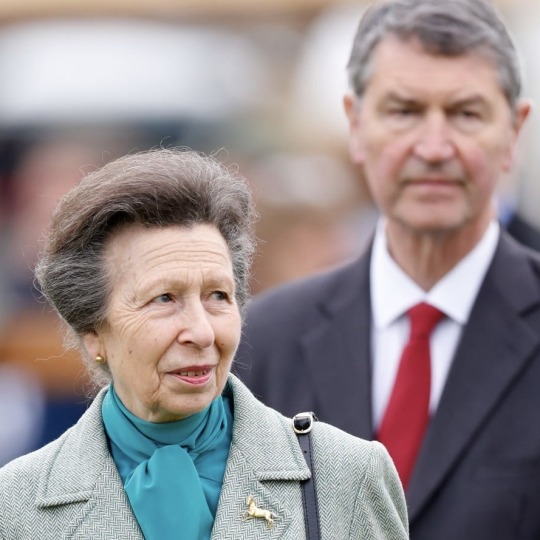
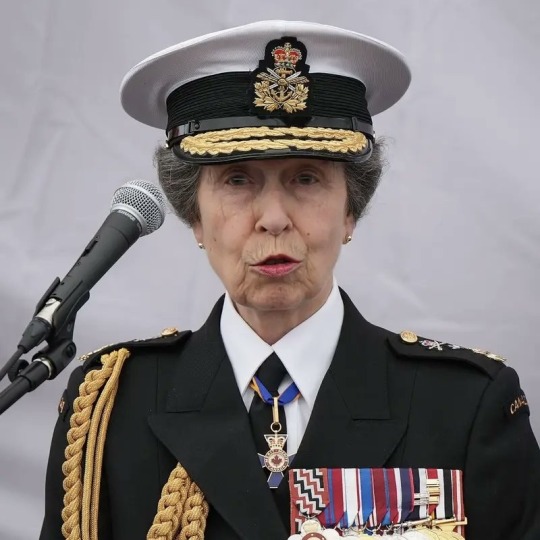
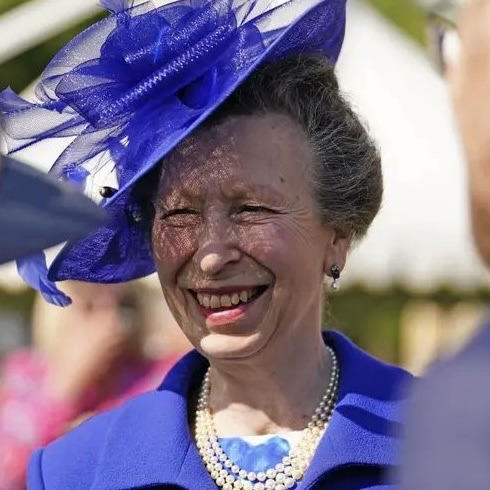

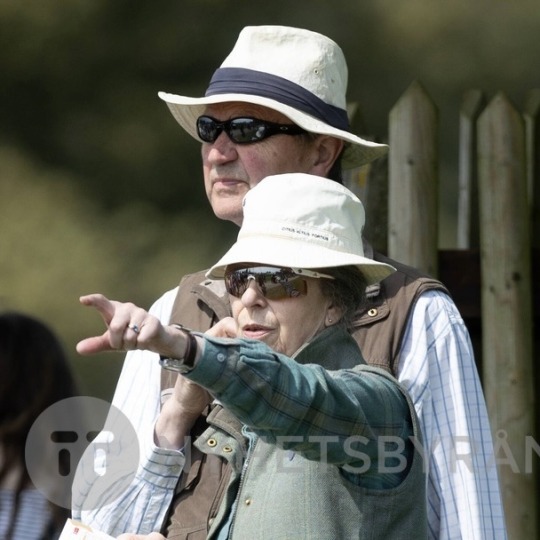
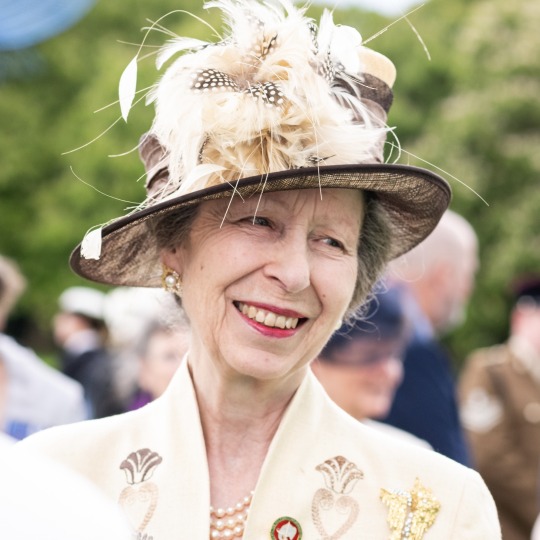

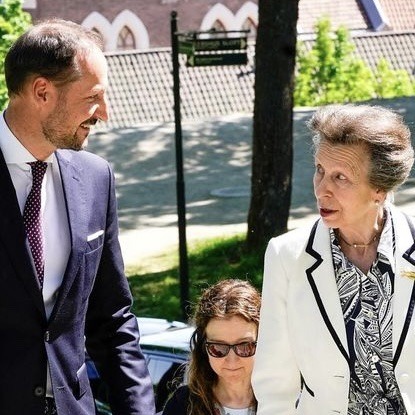
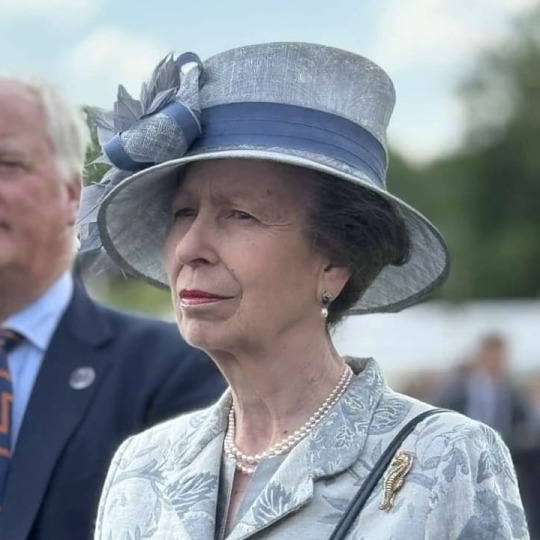
The Princess Royal’s Official Engagements in May 2024
01/05 On behalf of The King, held an Investiture at Buckingham Palace. 🎖️
As President of the City and Guilds of London Institute, attended The Princess Royal Training Awards Alumni Skills Summit at Guildhall. 🏆
With Sir Tim As Patron of the Whitley Fund for Nature, attended the Annual Whitley Awards Ceremony at the Royal Geographical Society. 🦋
02/05 With Sir Tim Named a Great Western Railway Intercity Express Train ‘HRH The Princess Royal’ at Paddington Railway Station. 🚉
Unofficial With Sir Tim Attended day two of the Royal Windsor Horse Show. 🐎
03/05 With Sir Tim Departed the UK from Stansted Airport for Canada and arrived at Vancouver International Airport
HRH, as Commodore-in-Chief of the Royal Canadian Navy (Pacific Fleet), with Sir Tim, carried out engagements in Vancouver;
Attended the Commissioning Ceremony for HMCS MAX BERNAYS at North Vancouver Burrard Drydock, before attending a Reception onboard. ⛴️ 🇨🇦
Attended a Dinner onboard HMCS MAX BERNAYS at sea. 🍽️
04/05 HRH, as Commodore-in-Chief of the Royal Canadian Navy (Pacific Fleet), with Sir Tim, carried out engagements in Victoria;
Toured HMCS Max Bernays at sea. 🌊
Visited Esquimalt Military Family Resource Centre at the Canadian Forces Base Esquimalt. 👪🪖
As President of the Commonwealth War Graves Commission, visited God’s Acre Cemetery and laid a wreath at the Memorial. 🌹
Visited the Maritime Museum of British Columbia Archive. 📜⚓️
Her Royal Highness afterwards visited Fed Urban Agriculture Society Urban Farm, 395 Harbour Road. 🌾
Attended a Reception given by the Lieutenant Governor of British Columbia (the Hon Janet Austin) at Government House. 🥂
Attended a Dinner given by the Lieutenant Governor of British Columbia at Government House. 🍽️
05/05 HRH, as Commodore-in-Chief of the Royal Canadian Navy (Pacific Fleet), with Sir Tim, carried out engagements in Victoria;
Visited Government House Gardens. 🪴⛲️
Attended the Battle of the Atlantic Memorial Parade at the Parliament Building and laid a wreath at the Cenotaph before taking the salute at the march past of Canadian Armed Forces Veterans, Serving Personnel and Cadets. 🫡
Attended a Royal Victoria Yacht Club Youth Dinghy Regatta. 🛥️
As Patron of the Canadian Therapeutic Riding Association, visited Victoria Therapeutic Riding Association. 🐎
Departed Vancouver International Airport for the United Kingdom. 🇨🇦✈️🇬🇧
06/05 Arrived at Heathrow Airport from Canada 🇨🇦✈️🇬🇧
08/05 Hosted a garden party at Buckingham Palace alongside The King and Queen, The Duke and Duchess of Edinburgh and The Duke and Duchess of Gloucester. 🍃☀️🪴
As Patron of the Woolf Institute, attended a Reception, followed by a Dinner, to launch the Randeree End of Life Programme. 🥂🍽️
09/05 As Patron of the Royal Navy and Royal Marines Charity, visited the Headquarters at HMS Excellent in Portsmouth. ⚓️
As Patron of the Women’s Royal Naval Service Benevolent Trust, attended the Annual Presentation and Reception at the National Museum of the Royal Navy. 🏛️
As Patron of the Association of Wrens, opened the new Headquarters Building at Lanyard House, HM Naval Base. 🫡
With Sir Tim As Patron of the National Museum of the Royal Navy, visited the HMS Victory Conservation Project at HM Naval Base ⚓️
With Sir Tim As Patron of the National Museum of the Royal Navy, attended the HMS Victory Conservation Project Dinner onboard HMS Victory at HM Naval Base. ⚓️🍽️
10/05 As Patron of Catch22, visited Greater Manchester Victims’ Services at Greater Manchester Police Headquarters. 👮
Visited the East Manchester Community Boat Project at Portland Basin Museum Marina in Ashton-Under-Lyne to mark its 30th Anniversary. 🛥️🎂
11/05 unofficial With Sir Tim Went to Badminton Horse Trials to cheer on Zara Tindall in her Cross Country stage of the three day event. 🏇🏼
13/05 Visited Stonehaven Open Air Swimming Pool to mark its 90th Anniversary. 🏊♀️🍾🏴
As Admiral of the Sea Cadet Corps and Marine Society and Sea Cadets, opened Stonehaven and District New Headquarters. ⚓️🫡 🏴
14/05 With Sir Tim As Patron of the United Kingdom Sailing Academy held a Founders’ Club Luncheon at St James’s Palace. ⛵️
As Chancellor of the University of London, attended the King’s Centre for Military Health Research Conference. 👩⚕️
With Sir Tim As Patron of the Wellington Trust, attended a Dinner onboard HMS WELLINGTON (mto mark the Ship’s Ninetieth Anniversary. ⚓️🥂
15/05 As Court Member of the Fishmongers’ Company, visited Glenarm Organic Salmon Fish Farm, off Glenarm Harbour in Ballymena. 🍣🚤
As Court Member of the Fishmongers’ Company, attended a Luncheon at Glenarm Castle. 🐟🍽️🏰
16/05 As Royal Patron of the National Coastwatch Institution, visited Bembridge Station, followed by a Reception at Brading Haven Yacht Club in Ryde, Isle of Wight. 🔍🌊
As President, Royal Yachting Association, opened the Sea View Yacht Club's Training Centre in Seaview, Isle of Wight. 🛥️
17/05 With Sir Tim Hosted the annual Not Forgotten Association garden party at Buckingham Palace. 🫖🍰☀️
20/05 unofficial Departed from RAF Brize Norton for Norway and landed at Oslo Gardermoen Airport. 🇬🇧✈️🇳🇴
21/05 As Patron of the Anglo-Norwegian Resistance Commemoration Project, visited the Norwegian Industrial Workers Museum in Vemork, Norway. 🔨⚙️🇳🇴
As Patron of the Anglo-Norwegian Resistance Commemoration Project, received a briefing on the sinking of DF Hydro at Mael Station in Telemark, Norway. 🏭🇳🇴
Attended a Reception given by His Majesty’s Ambassador to the Kingdom of Norway at the Residence in Oslo. 🥂🇳🇴🇬🇧
22/05 As President of the Commonwealth War Graves Commission, visited Vestre Gravlund Cemetery and laid a wreath on the memorial. 🪦
As Patron of the Anglo-Norwegian Resistance Commemoration Project, visited the Linge Club and attended a Reception at Akershus Fortress, Oslo. 🇳🇴🇬🇧
As Patron of the Anglo-Norwegian Resistance Commemoration Project, visited the Norwegian Shipowners’ Mutual War Risks Insurance Association. 🪖🇳🇴
As Patron of the Anglo-Norwegian Resistance Commemoration Project, with The Crown Prince of Norway, visited the Norwegian Resistance Museum, Akershus Fortress. 🏰 🇳🇴
unofficial Departed from Oslo Gardermoen Airport and landed at RAF Brize Norton . 🇬🇧✈️🇳🇴
23/05 As Patron of the Hornet Services Sailing Club, visited the club for their 60th anniversary. ⛵️🎂
Opened the Army Sailing Association Offshore Centre in Gosport. ⛵️
With Sir Tim & Duke of Kent Held a Garden Party at Buckingham Palace to celebrate the Royal National Lifeboat Institution's 200th anniversary. 🛟☕️
With Sir Tim Visited the Royal Horticultural Society Chelsea Flower Show at the Royal Hospital Chelsea. 🌸🌺🌼💐
24/05 Opened the Admiral Lord Cochrane Room at the Royal United Services Institute in Whitehall, London. 🔐
Sometime in May unofficial Sir Tim, as Chair of Trustees, attended the Science Museum Groups annual dinner
Total official engagements for Anne in May: 53
2024 total so far: 224
Total official engagements accompanied by Tim in May: 23
2024 total so far: 55
FYI - due to certain royal family members being off ill/in recovery I won't be posting everyone's engagement counts out of respect, I am continuing to count them and release the totals at the end of the year.
#a very busy month!!!#i loved her visits to canada and norway!!!#very excited for june!#aimees unofficial engagement count 2024#may 2024#princess anne#princess royal#tim laurence#timothy laurence
41 notes
·
View notes
Text

Hirshhorn Sculpture Garden, National Archives in the distance, National Mall, Washington, DC, 2008.
#urban landscape#museum#sculpture#hirshhorn museum#national mall#washington dc#2008#photographers on tumblr
8 notes
·
View notes
Text
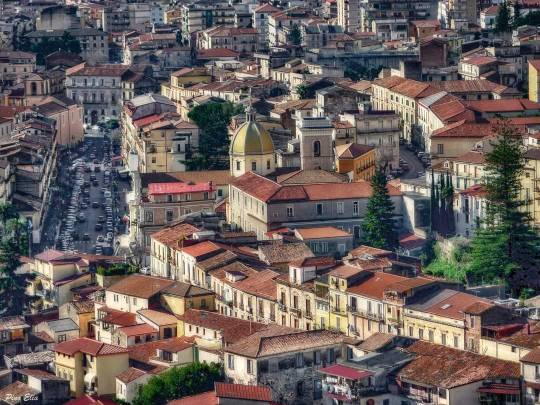
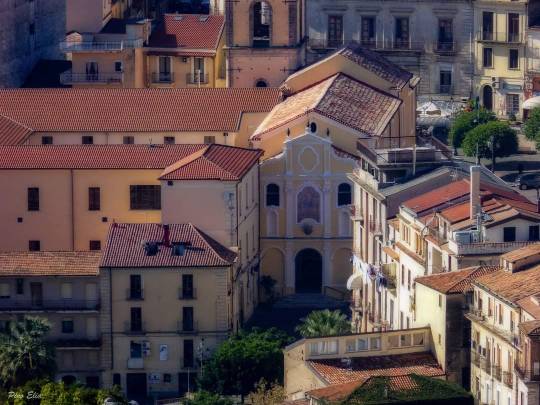



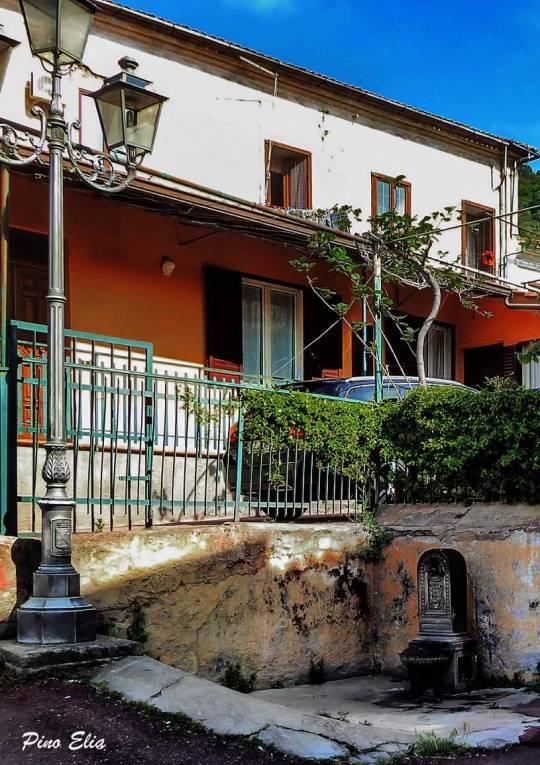

Lamezia Terme, Calabria, Italy
Lamezia Terme is located on the eastern border of the coastal plain commonly called Piana di Sant'Eufemia, which was created by drying a wide marshy area. It is the third largest city in Calabria by number of inhabitants and has a relatively recent history.
Established in 1968 from the fusion of three pre-existing towns: Nicastro, Sambiase, and Sant'Eufemia Lamezia, it is not only an important regional and national hub due to its strategic location in the centre of the region, but also a crucial business hub for the region's economy. These three towns have contributed to the city's diverse cultural heritage and historical significance.
Lamezia Terme is most famous for its international airport which is situated a few kilometres outside the town.
The Baths of Charon

Despite its modern origins, the name is much older: it derives from the first political community attested on this territory, the Lametìnoi, dating back to protohistoric times.
The Baths, on the other hand, refers to one of the main resources of the area, the Terme di Caronte, known since Roman times as Aque Angae. These four springs are located on the slopes of the Reventino mountain massif and, combined with the current of the Bagni river, give rise to different degrees of temperature: the highest reaches 39°C, hence the name Charon.

The secrets of ancient Terina
The first human settlements in what is now modern Lamezia Terme were discovered in 1865, when jewellery was found in the area of Sant'Eufemia Vetere, which was later sold to the British Museum in London, which still preserves it today.
This discovery, known as the Treasure of St Euphemia, was the first in a long series, which during the 20th century confirmed the ancient settlement of Terina. It was not until 1997, however, that it was decided to initiate a systematic search that identified a well-structured urban layout, of which we now know a living quarter built with parallel axes that define a regular urban grid. According to the most widely accepted hypothesis, this would be the extension of a pre-existing structure dating back to the 5th century BC.
Two rooms of the Lametino Archaeological Museum are dedicated to ancient Terina. Lametino Archaeological Museum housed in the Monumental Complex of San Domenico. Divided into three sections: Prehistoric, Classical and Medieval, will give you an insight into the history of this area, from the earliest times. There is, for instance, a hydria, which is a vase, dated between 380 and 370 BC, as well as everyday objects.
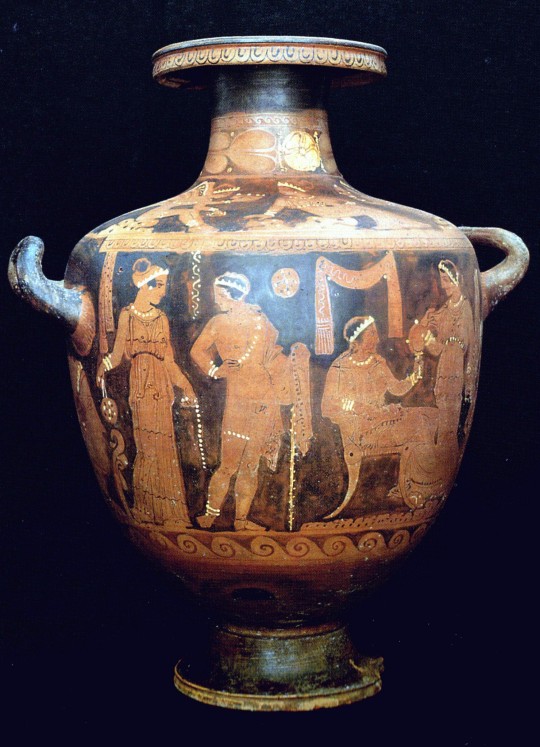
The ruins of the medieval castle
There is still much to discover in Lamezia Terme, especially in the historic city centre. On Hill of San Teodoro, stands the Norman castle of Nicastro about whose origins there is some dispute. Built on the hillside, a unique strategic position to control the surrounding plain all the way to the sea, according to some dates back to Byzantine era, according to others Svevo-Normana.
All that remains of the original structure are four towers, the ramparts, walls and a buttress with a small loggia; the earthquake of 1638 caused great damage to the structure, but at the same time contributed to the legends that populate it.
Photos by Pino Elia
Follow us on Instagram, @calabria_mediterranea
#lamezia terme#calabria#italy#italia#south italy#southern italy#mediterranean#italian#mediterranean sea#seascape#sea#europe#landscape#italian landscape#buildings#cityscape#city#town#architecture#building#people#flowers#lamezia#lameziaterme#history#greek#magna graecia#magna grecia#baths#greek art
34 notes
·
View notes
Text
there’s so many ppl enabling me in the notes of this post, so here enjoy some Thoughts i’ve had about the nurseydex maine road trip so far:
they do a road trip up the coast of maine over fall break their senior year so that nursey can see acadia national park while the leaves are changing
william “acts of service” poindexter decides that it is his Responsibility as nursey’s captain and fellow d-man to become maine’s official tour guide barbie. he plans the entire thing out and even prints them little itineraries and maps and shit because this boy is nothing is not Efficient
nursey makes them stop to see every single lighthouse they go anywhere near just to be a little shit (there are 65 lighthouses in maine, this would take So Long even if you just stopped at like a quarter of them)
the only canonical reference i could find for any actual locations in maine in the comic is that dex said his uncle who owned the lobster fishing boat he worked on over the summers lived in portland
(a side note to the above, i find this hilarious. portland is an pretty solidly liberal urban city - imagine a very small boston - and not somewhere you’re very likely to find small family-owned lobster fishing boats, at least in my experience. it would make way more sense for his uncle to live somewhere like rockland but i digress)
dex is 100% positive that nursey would Love portland so he carves out two whole days of their trip for them to stay with his uncle and explore. they go to the art museum and old port and the port head lighthouse and the top of the world lookout at fort sumner park and all the little shops and hidden places dex had found from living there every summer for years
nursey does end up loving portland but it might be more about the boy that shows it to him
even though his uncle lives in portland, i am still personally convinced that dex’s family mostly lives around the rockland area. i will go on a rant about nursey meeting dex’s close family another time, but while they’re in rockland, nursey continues his dedication to seeing all the lighthouses he can by forcing dex to make the almost mile long trek out to the breakwater lighthouse with him (don’t think about them standing alone next to this little building almost a mile out from land. the wind is chilly and strong and it makes dex’s hair look ridiculous and his cheeks flush and nursey definitely doesn’t want to kiss him ITS FINE ITS CHILL)
dex has them make a detour up to bangor and surprises nursey with going to see stephen king’s house. he doesnt understand why people are interested in looking at some dudes house At All but he does know nursey would love it so he does it anyways. the fence is cool and nursey gets so excited he almost face plants jumping out of the car, so dex counts it as a success
some random places i feel like dex would make them stop at along the way: freeport (nursey is both so confused and so delighted by just Everything about that place, but he loses his mind over the mcdonald’s and the ll bean outlet), ogunquit (dex purposefully takes highway 1 instead of the maine turnpike going towards portland so that they drive through ogunquit and he can see nursey’s face when he realizes they’re driving through the single gayest town he’s ever seen in his life and it’s in southern maine), moose point state park (there are a billion lil state parks in maine but i just randomly like this one in particular idk i think it’s cute), camden hills state park (it’s too foggy when they get there to drive up to the top so nursey makes them go on a hike instead so they didn’t “waste their time.” they get lost within like 10 minutes and are wet from the fog by the time they make it back to the car like 2 hours later), the desert of maine (it’s kinda boring to dex bc he’s seen it a dozen times since he was a kid, but nursey gets enthralled by the science behind it so it’s worth it), cushing (this is where the famous painter andrew wyeth lived at the olson house and was the subject of a lot of his work and i just feel like nursey would have fun seeing this place)
when they eventually make it to acadia, nursey ends up spending like two solid hours just sitting at sargent peak staring out over everything and desperately scrawling out lines of poetry into his notebook (dex spends most of those 2 hours staring at nursey but somehow doesn’t notice that nursey definitely isn’t writing about the scenery)
#im thinking about legitimately writing this out but hoo boy it'd end up being so long#will anyone actually see this? no probably not but it was fun to get it out of my head lol#lmk if any of you want me to add pics of these places so you have reference for wtf im talking about without having to google everything#nurseydex#derek nurse#william poindexter#omgcp#nurseydex maine roadtrip au
268 notes
·
View notes